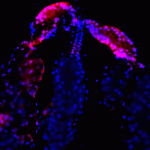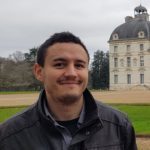Lien vers Pubmed [PMID] – 32463828
Lien DOI – 10.1371/journal.pgen.1008794
PLoS Genet 2020 05; 16(5): e1008794
Although specific interactions between host and pathogen genotypes have been well documented in invertebrates, the identification of host genes involved in discriminating pathogen genotypes remains a challenge. In the mosquito Aedes aegypti, the main dengue virus (DENV) vector worldwide, statistical associations between host genetic markers and DENV types or strains were previously detected, but the host genes underlying this genetic specificity have not been identified. In particular, it is unknown whether DENV type- or strain-specific resistance relies on allelic variants of the same genes or on distinct gene sets. Here, we investigated the genetic architecture of DENV resistance in a population of Ae. aegypti from Bakoumba, Gabon, which displays a stronger resistance phenotype to DENV type 1 (DENV-1) than to DENV type 3 (DENV-3) infection. Following experimental exposure to either DENV-1 or DENV-3, we sequenced the exomes of large phenotypic pools of mosquitoes that are either resistant or susceptible to each DENV type. Using variation in single-nucleotide polymorphism (SNP) frequencies among the pools, we computed empirical p values based on average gene scores adjusted for the differences in SNP counts, to identify genes associated with infection in a DENV type-specific manner. Among the top 5% most significant genes, 263 genes were significantly associated with resistance to both DENV-1 and DENV-3, 287 genes were only associated with DENV-1 resistance and 290 were only associated with DENV-3 resistance. The shared significant genes were enriched in genes with ATP binding activity and sulfur compound transmembrane transporter activity, whereas the genes uniquely associated with DENV-3 resistance were enriched in genes with zinc ion binding activity. Together, these results indicate that specific resistance to different DENV types relies on largely non-overlapping sets of genes in this Ae. aegypti population and pave the way for further mechanistic studies.




